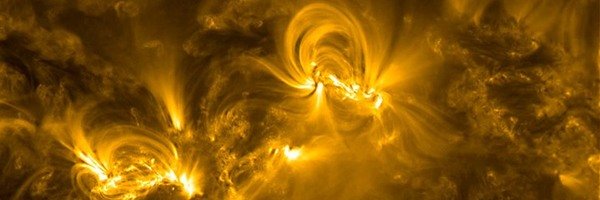
Extreme-Ultraviolet Imager (EUI)
The Extreme-Ultraviolet Imager (EUI) is a suite of remote-sensing telescopes which will image at high resolution the structures in the solar atmosphere from the chromosphere to the corona. The instrument package comprises two high-resolution telescopes and a full-Sun imager. Thus EUI will observe and analyse the global morphology and local dynamics of the solar atmosphere, in particular at the base of the corona. The full-Sun imager will show the gross structure of the whole Sun at coronal temperatures, while the high-resolution telescopes will show in selected wavelength bands the fine structures that become visible in the close-up views of the Sun by Solar Orbiter during its perihelion phase of the orbit.
The scientific goals of the EUI instrument suite is to provide high-resolution extreme-ultraviolet images of the corona, in order to reveal the fine-scale structure of coronal features, and to take full-disk images of the Sun, at any part of the orbit in order to reveal the global structure and irradiance of the Sun, and of its polar regions. Thus EUI will provide the required context images for other instruments, in particular for SPICE and METIS. Such images are required to establish the links between remote-sensing and in-situ observations, i.e. between observations of the solar surface and of the heliosphere. EUI will be capable of providing image sequences at high cadence allowing fast events to be followed in time while the other remote-sensing instruments on Solar Orbiter also observe the same scene.

The fully integrated flight unit of the EUI instrument suite
The EUI instrument suite is composed of three telescopes: one dual-band full-sun imager (FSI) working alternatively at the 17.4 nm and 30.4 nm EUV passbands (named “FSI174/304”), and two high resolution imagers (HRI), one at the hydrogen Lyman-α line at 121.6 nm, (named “HRILy-α”) and one in the extreme UV line at 17.4 nm (named “HRIEUV”). In the HRI channels the image is produced by a two-mirror telescope working in near normal incidence. The EUV reflectivity of the optical surfaces is obtained with coatings specifically developed for providing the spectral selection of the units. The spectral selection is complemented with filters rejecting the visible and IR radiation. The combination of passbands of the mirrors and filters provide the selection of the radiation of the desired spectral lines with required purity.
The Lyman-α HRI has been provided by MPS. The main components, i. e., the two mirrors and the camera with high sensitivity at 121.6 nm, have been developed by MPS.

The two mirrors and the camera of the HRILy-α channel

